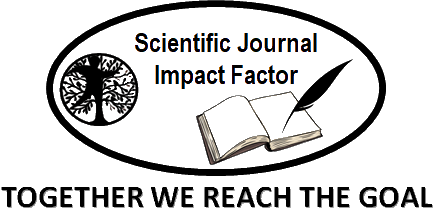Legal Analysis of the TAPERA Programme in Increasing the Availability of Housing for Low-Income Communities in Indonesia Based on PP No. 21 of 2024
DOI:
https://doi.org/10.58812/wslhr.v2i03.1117Keywords:
TAPERA Programme, Housing Affordability, Low-Income Communities, Government Regulation No. 21 of 2024, Indonesia Housing PolicyAbstract
This study conducts a normative juridical analysis of the TAPERA Programme, established by Government Regulation No. 21 of 2024, focusing on its efficacy in increasing the availability of housing for low-income communities in Indonesia. The TAPERA Programme aims to address housing affordability by encouraging savings among low-income individuals and providing financial assistance for housing needs. This research examines the legal framework, operational mechanisms, and regulatory environment of the programme, assessing its alignment with national housing policies and its potential impact. The findings indicate that while the TAPERA Programme holds significant promise due to its inclusive approach and emphasis on sustainability, challenges related to participation rates, implementation efficiency, and regulatory coherence need to be addressed. This analysis contributes to a deeper understanding of the legal and regulatory dimensions of housing policies in Indonesia, providing insights for policymakers and stakeholders involved in housing development for low-income communities.
References
E. Josephine, H. W. Wiranegara, and Y. Supriatna, “A COMPARATIVE ANALYSIS OF FACTORS AFFECTING HOUSING AFFORDABILITY FOR LOW-INCOME GROUPS IN SUBURBAN AREAS OF JAKARTA, INDONESIA,” Int. J. Livable Sp., vol. 9, no. 1, pp. 1–14, 2024.
A. Sururi, “The Effectiveness of Housing Finance Policy Innovation for Low-Income Communities in Indonesia,” Archit. Urban Plan., vol. 20, no. 1, pp. 28–39, 2024.
F. Hibban and A. G. Firdausy, “Implementation of Surakarta City Regional Regulation Number 7 of 2023 towards Fulfillment of the Rights to Housing and Settlement Areas in Surakarta City,” ARRUS J. Soc. Sci. Humanit., vol. 4, no. 2, pp. 208–216, 2024.
C. Obermayr, Housing the Poor: The Right to the City and Policy Arrangements in Urban Indonesia. Franz Steiner Verlag, 2023.
L. G. Perdamaian and Z. Zhai, “Status of Livability in Indonesian Affordable Housing,” Architecture, vol. 4, no. 2, pp. 281–302, 2024.
B. S. Pranoto and N. Tresani, “PENGEMBANGAN HUNIAN TERJANGKAU PADA KAWASAN BERORIENTASI TRANSIT (KBT) LEBAK BULUS JAKARTA,” J. Muara Sains, Teknol. Kedokt. dan Ilmu Kesehat., vol. 8, no. 1, pp. 59–68, 2024.
S. Frisnoiry, D. A. Febrianti, E. E. B. Tambunan, and G. H. Tarigan, “Problems of Income Disparity Based on the Gini Ratio in the Indonesian Economy,” Indones. J. Bank. Financ. Technol., vol. 2, no. 2, pp. 125–138, 2024.
E. Telaumbanua, I. Harsono, and I. Soegiarto, “Urbanisation in Indonesia: The Relationship between Income Inequality, Urban Infrastructure, Access to Education, and Population Growth with Social Cohesion, Environmental Resilience, and Housing Quality to look at Urbanisation in Indonesia,” Int. J. Business, Law, Educ., vol. 5, no. 1, pp. 603–614, 2024.
C. Lynch, A. Singh, and Y. F. Zhang, Towards a More Nuanced Approach to Measuring Housing Affordability: Evidence from Pakistan. The World Bank, 2023.
Ş. Kızılarslan and S. Göcen, “Determinants of household savings rates: Logistic quantile regression approach,” J. Appl. MICROECONOMETRICS, vol. 3, no. 1, pp. 11–22, 2023.
E. Stockhammer and C. Wolf, “Building blocks for the macroeconomics and political economy of housing,” in Money, Finance, and Capitalist Crisis, Routledge, 2022, pp. 43–67.
M. Saleh and A. Setiyoningrum, “Permasalahan dan Solusi Kebijakan Dalam Pemanfaatan Rumah Susun Sewa (Rusunawa) yang Efektif dan Efisien di Kota Surabaya.,” Notaire, vol. 7, no. 1, 2024.
E. Avgeri, M. Psillaki, and E. Zervoudi, “Peer-to-Peer Lending as a Determinant of Federal Housing Administration-Insured Mortgages to Meet Sustainable Development Goals,” Sustainability, vol. 15, no. 18, p. 13618, 2023.
Y. Zhang, “Building Sustainable Social Housing System: A Singapore Case from New Institutionalism Economics Approach,” Highlights Sci. Eng. Technol., vol. 86, pp. 120–125, 2024.
Z. Xie, Z. Guo, X. Hong, Z. Zhao, J. Liu, and X. Li, “Housing Profile and Recommendation for Housing Provident Fund Using Two-Tower Neural Collaborative Filtering,” in 2023 8th International Conference on Cloud Computing and Big Data Analytics (ICCCBDA), IEEE, 2023, pp. 36–43.
D. Mansir, R. Abdulrahman, Z. Ishaq, and A. Ibrahim, “Implications of Housing Corporations’ Capacity on Successful Delivery of Mass Housing Programmes,” Environ. Technol. Sci. J., vol. 14, pp. 54–67, Aug. 2023, doi: 10.4314/etsj.v14i1.6.
L. R. Rodríguez-Reyes and M. A. Cortés Lara, “Collective Housing Subsidies: A Public Policy Proposal for Sustainability,” J. Macromarketing, p. 02761467231222538, 2024.
A. Pangeran, “HEALTHY LIVING IN SUBSIDIZED HOUSES? EVIDENCE FROM INDONESIA’S FLPP PROGRAM.,” J. Dev. Econ., vol. 8, no. 2, 2023.
J. Martínez‐Cantos and J. Martín‐Fernández, “Cost‐effectiveness of a ‘Housing First’programme implemented in Spain: An evaluation based on a randomised controlled trial,” Int. J. Soc. Welf., vol. 33, no. 1, pp. 106–122, 2024.
W. Widyastutik, I. Hermawan, S. Amaliah, Y. Nur’aini, and K. Khristianto, “The Housing Financing Policy and Its Impacts on Low-Income Communities and Indonesian Economy,” Mimb. J. Sos. dan Pembang., Dec. 2022, doi: 10.29313/mimbar.v0i0.9663.
Downloads
Published
Issue
Section
License
Copyright (c) 2024 Emmi Rahmiwita Nasution, Nuryati Solapari, Yuli Triastuti

This work is licensed under a Creative Commons Attribution-ShareAlike 4.0 International License.























 Instagram
Instagram 